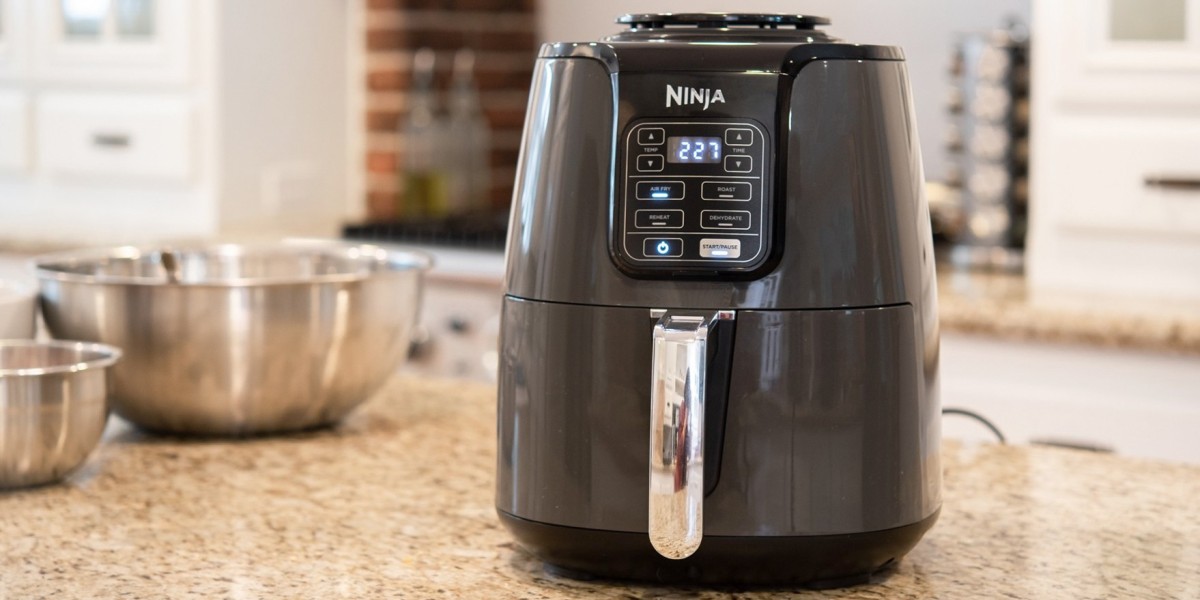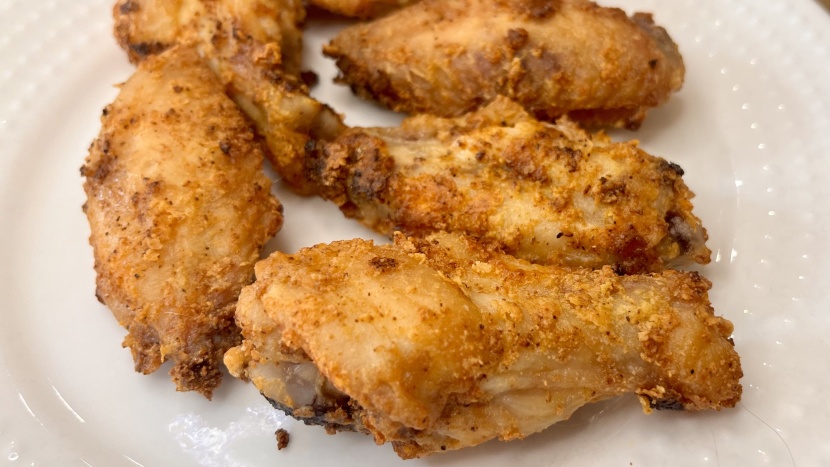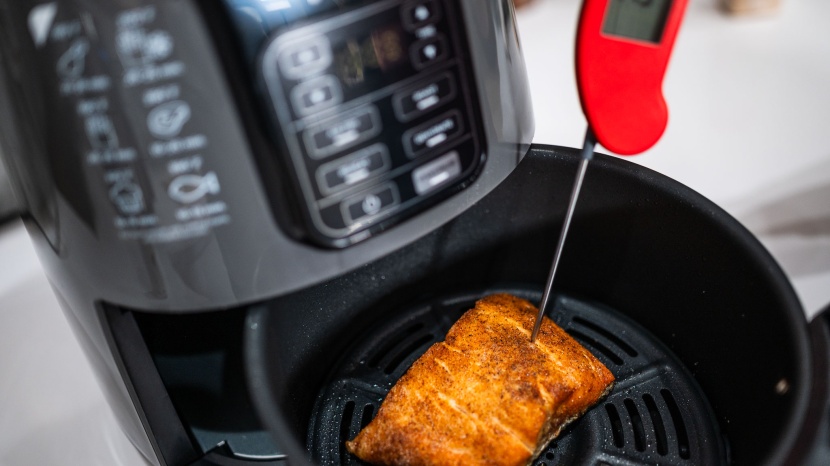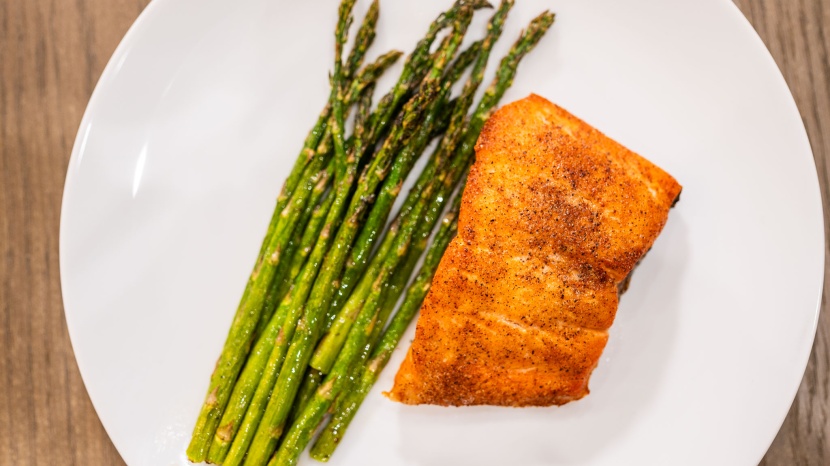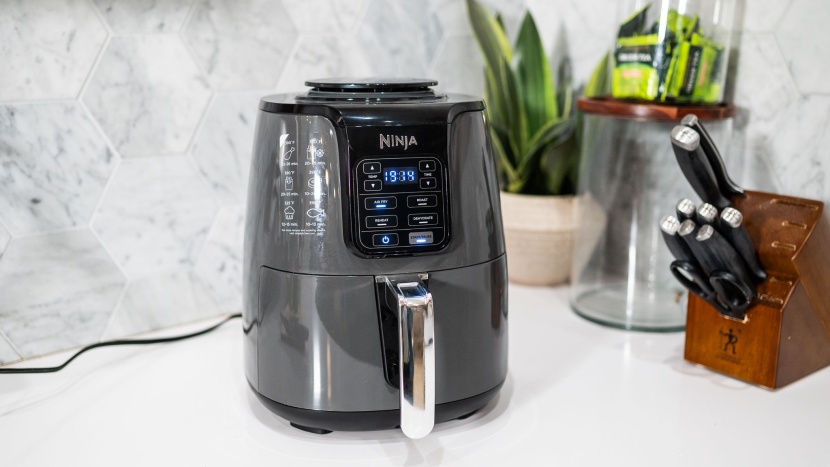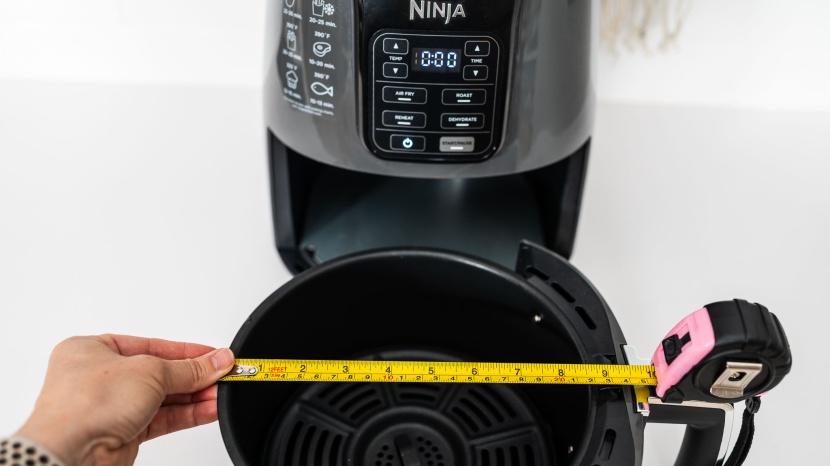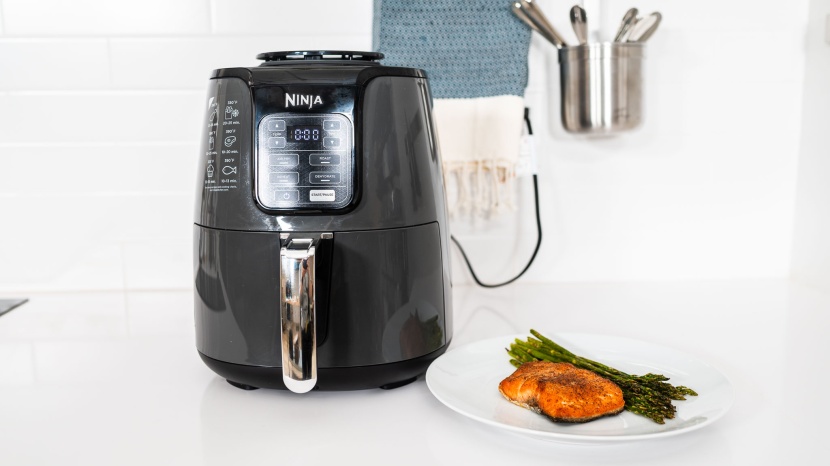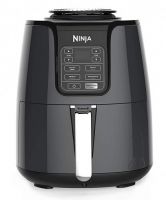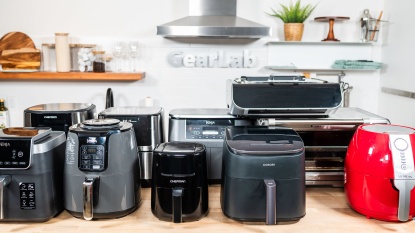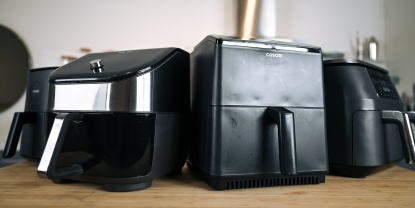
Our Verdict
Our Analysis and Test Results
If you're looking for a dedicated air fryer, the Ninja Air Fryer provides exceptional results and a great overall experience. It has a 4-quart capacity and scored the highest of all the air fryers I've tested for temperature accuracy.
Cooking Quality
Our cooking results revealed that the Ninja excels at creating crispy exteriors while maintaining moisture inside—the holy grail of air frying.
Fries and Tater Tots
The tater tots emerged with beautiful golden-brown coloring and that sought-after textural contrast. The exterior shattered satisfyingly when bitten, revealing a light, fluffy interior that avoided any mushiness or mealiness. The Ninja struck an excellent balance between a crispy exterior and a moist interior texture.
Chicken Wings
The Ninja produced wings with pretty good browning and notably juicy meat. When we bit into them, the meat actually glistened, indicating excellent moisture retention. The skin achieved a nice crisp, though we'd describe it as lighter than some competitors. Still, these wings would satisfy most air fryer enthusiasts looking for a healthier alternative to deep-fried wings.
Salmon
The salmon test truly showcased the Ninja's capabilities. We achieved a lovely soft texture with crispy skin and good browning throughout. The fish maintained its moisture beautifully, coming very close to the performance of higher-end models.
The skin crisped up nicely while the interior remained tender and flaky—exactly what you want from air-fried salmon. This performance suggests that the Ninja handles delicate proteins as well as it does frozen convenience foods. “The salmon I tasted from this machine was delicious,” one tester stated.
Cooking Speed
Speed matters when you're hungry, but consistency matters more. The Ninja Air Fryer strikes a reasonable balance between the two. During testing, we found it requires a 3-minute preheat for optimal results, followed by cooking times that align closely with recipe recommendations. The chicken wings took 15 minutes after preheating, while the salmon reached a perfect 145°F internal temperature in just 12 minutes post-preheat.
What impressed us most wasn't its raw speed but rather the predictability. Unlike some ultra-fast models that risk burning food if you follow standard recipe times, the Ninja cooks at a pace that matches most air fryer recipes. This means you can trust that 10-12 minute recipe to actually take 10-12 minutes (plus preheat), reducing the guesswork and frequent checking that plague some models. We always recommend checking food a couple minutes before the recipe's stated time, but with the Ninja, we rarely found food overcooked when following standard guidelines.
Temperature Accuracy
The Ninja's results here were impressive: the unit maintained an average temperature remarkably close to the target, deviating by only about 3.2 degrees on average.
More importantly, the Ninja avoided the wild temperature swings that plague many air fryers. While some units technically hit their target temperature but oscillate by 30+ degrees throughout the cooking cycle, the Ninja stayed within a tight 15-degree range. This consistency explains why the food came out so evenly cooked—no hot spots, no undercooked sections, just reliable results batch after batch.
The external temperature reached 146°F during operation, just slightly above the 140°F safety threshold. While you should still exercise caution, this relatively cool exterior makes it safer than many competitors, which is especially important in cramped kitchens where the unit might be positioned close to other items.
Ease of Use
Simplicity reigns with the Ninja Air Fryer's interface, which uses physical buttons rather than touch controls. We appreciate this choice since physical buttons provide tactile feedback and work reliably even with wet or greasy fingers. The interface includes straightforward controls for temperature, time, and cooking modes.
However, the temperature control system frustrated us throughout testing. The unit adjusts temperature in irregular increments ranging from 5 to 15 degrees, making precise control difficult. When a specific recipe called for 370°F, we had to choose between 360°F or 375°F. While 5 degrees rarely ruins a dish, this lack of precision feels like an unnecessary limitation in an otherwise capable machine.
The Ninja offers four cooking modes: Air Fry (300-400°F), Roast (250-400°F), Reheat (270-400°F), and Dehydrate (105-195°F). These aren't food-specific presets but rather heat distribution patterns, which we actually prefer—it encourages you to understand how the machine works rather than blindly trusting a “frozen fries” button. The included recipe book helps bridge the knowledge gap for beginners.
Notable absences include an automatic pause when removing the basket (requiring manual pausing before checking food) and any shake reminder system. During the wing testing, we had to set separate timers to remember the every-5-minute flips. These aren't deal-breakers, but they do make the cooking process slightly less convenient than that of some competitors.
Cleaning proved refreshingly simple. Both the crisper plate and basket are dishwasher safe, though the manufacturer recommends hand washing to extend their lifespan. We found hand washing easy enough—the PTFE-free ceramic coating released food readily, and the compact size made maneuvering in the sink simple. Even after cooking greasy wings, a quick scrub with warm, soapy water restored the basket to like-new condition.
Should You Buy The Ninja Air Fryer?
The Ninja Air Fryer makes sense for singles, couples, or anyone with limited counter space who values consistent results over bells and whistles. Its 4-quart round basket (8.25" x 8.25") provides 53.5 square inches of cooking surface—enough for a meal for two or sides for four. If you prioritize straightforward operation, reliable temperature control, and easy cleaning over advanced features like dual baskets or smartphone connectivity, this model delivers excellent value. The PTFE-free cooking surface also appeals to health-conscious users avoiding traditional non-stick coatings.
What Other Air Fryers Should You Consider?
If you need more capacity for family meals or entertaining, consider the Cosori TurboBlaze. This model was a favorite for its large capacity, offering significantly more cooking space while maintaining excellent temperature accuracy and cooking performance for vegetable-based dishes, fish, and poultry.
For those on a tighter budget who don't mind sacrificing some temperature consistency, the Ultrean Air Fryer delivers surprisingly good cooking results at a fraction of the price, though you'll need to monitor cooking times more carefully due to less precise temperature control.| Awards | Best Overall Air Fryer |
|---|---|
| Price | $90 List Check Amazon (on sale!) |
Overall Score  |
|
| Star Rating | |
| Bottom Line | An excellent, four-quart fryer that consistently makes delicious meals no matter what you're cooking |
| Pros | Great frying and crisping, delectable salmon, user-friendly, excellent temp accuracy, PTFE-free |
| Cons | Limited temperature controls |
| Rating Categories | Ninja |
| Cooking Quality (50%) | |
| Cooking Speed (25%) | |
| Temperature Accuracy (15%) | |
| Ease of Use (10%) | |
| Specifications | Ninja |
| Measured Dimensions | 11" x 13" x 13.3" |
| Capacity | 4 qt |
| PTFE in the cooking surface coating? | No |
| Shake Alarm | No |
| Accessories | None |
| Max Outside Temperature | 160 |
| Measured Cooking Area | 53.5 sq in |
| Window | No |
| Air Fry Temp Range | 300- 400 |
| Dishwasher Safe Components | Yes |
| Power Consumption | 1550 watt |


